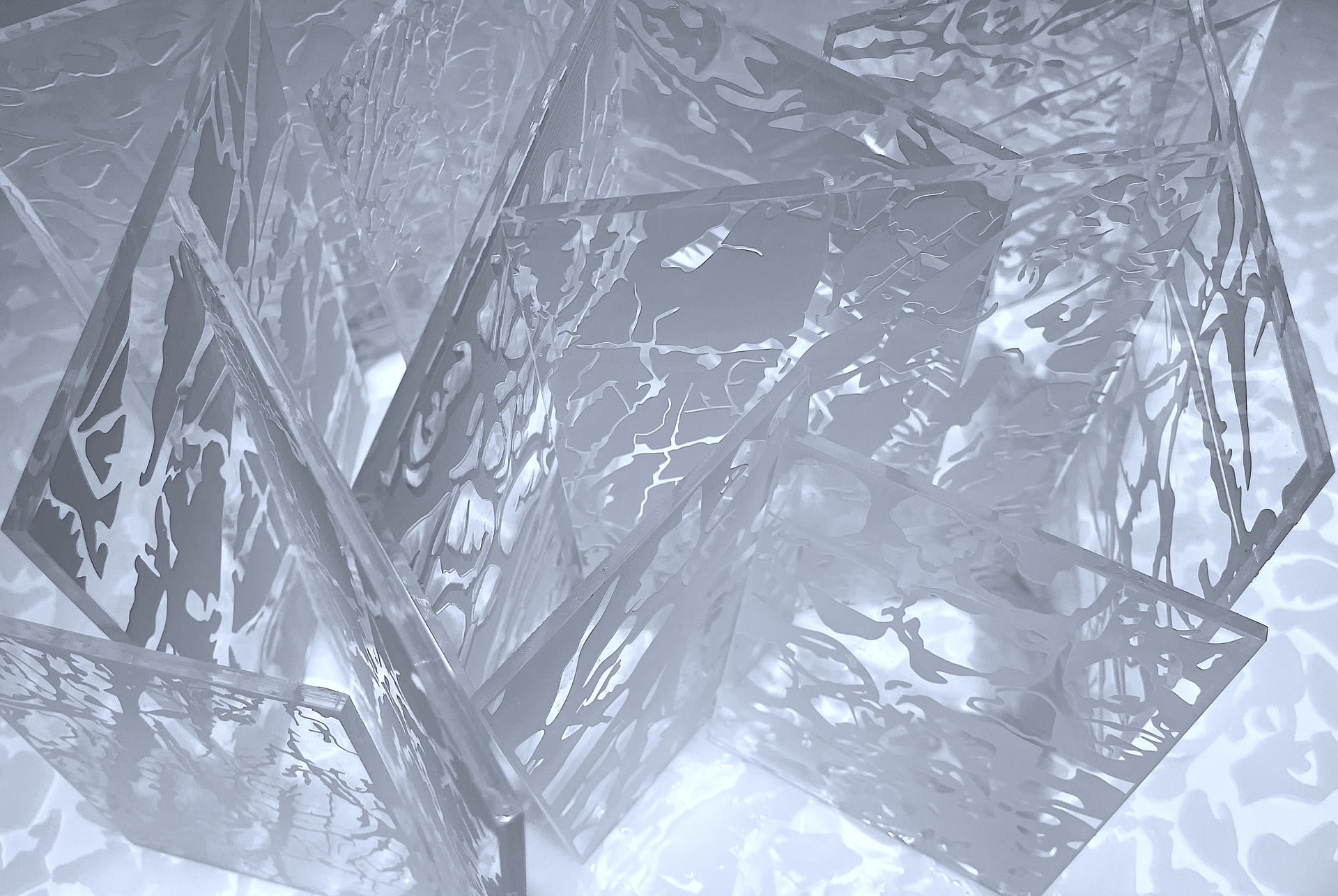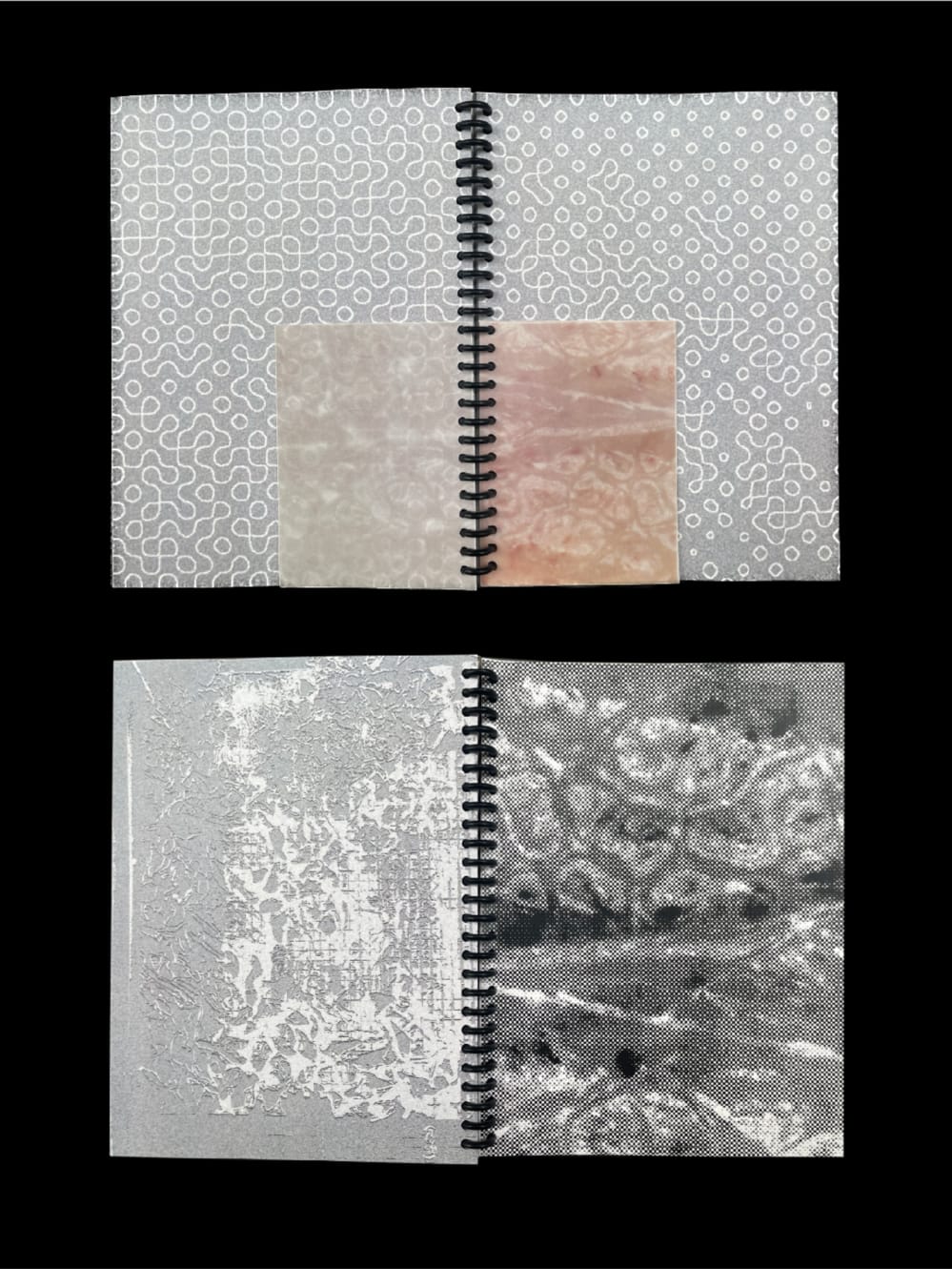A consideration of OCD through human skin textures
Within this project, the designer presupposes a female character based on herself. The work portrays the process of 'her,' who has experienced obsessive-compulsive disorder (OCD), interacting with her surroundings. It also incorporates theories and data from professional research papers on OCD. The author is deeply grateful for the collaboration and professional support provided by Dr. Yunfei Zhou. The integration of 'her' experiences with medical knowledge becomes a dialogue between self and science, a process of self-reflection and self-healing.
The project's focal point is 'skin'—the medium through which individuals interact and the bridge between individuals and their environment. The daily life of OCD is filled with repetitive actions and uncontrollable repetitive thoughts. Each contact with objects leaves traces on the skin, accumulating over time and becoming a part of herself. These traces serve as evidence of experiences, and magnified skin marks resemble a collection of evidence, a way to validate one's own memories. Due to the psychological pursuit of perfection in daily affairs, 'she' cannot accept the imperfect aspects of objects. Amplification is a repetitive action that 'she' performs to repeatedly confirm the details of things. However, ultimate perfection is unattainable, just as the skin of the human body carries its own imperfections.
Based on research on OCD, Exposure and Response Prevention (ERP) therapy is an effective clinical treatment method aimed at helping sufferers confront and expose their fears or discomfort related to their obsessive thoughts and refraining from engaging in compulsive behaviors to alleviate distress. The approach of magnifying the imperfect texture of the skin in the project imitates the characteristics of ERP therapy itself: exposure in specific environments. Based on this characteristic, the project exposes the scenes that make OCD sufferers uncomfortable while allowing ordinary viewers to experience specific aspects of OCD. The process of magnifying the traces left by skin contact with objects also explores the relationship between individuals and between individuals and their environment.



























